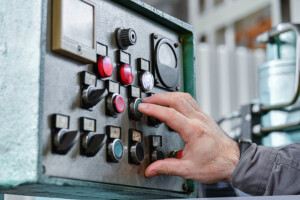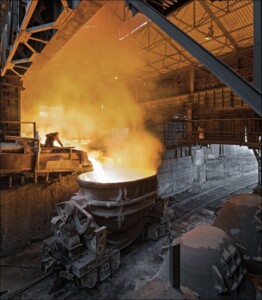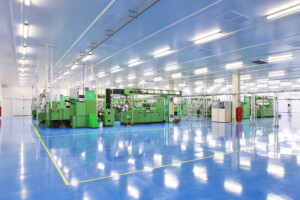 Some factories work around the clock. But more commonly, factories ramp up at the beginning of the week, workday, or shift and then ramp down at the end. I often have the feeling that this is a somewhat neglected topic despite its influence on safety, quality, and efficiency. Hence I would like to take a closer look at the ramp-up and ramp-down procedures in industry, and how to optimize them. This first post will look at how to prepare a ramp-up before actually flicking the switch of the process.
Some factories work around the clock. But more commonly, factories ramp up at the beginning of the week, workday, or shift and then ramp down at the end. I often have the feeling that this is a somewhat neglected topic despite its influence on safety, quality, and efficiency. Hence I would like to take a closer look at the ramp-up and ramp-down procedures in industry, and how to optimize them. This first post will look at how to prepare a ramp-up before actually flicking the switch of the process.
Introduction
Ramping a process up and down can have two meanings. One is to start and stop a process. The other one is to install a new process and get it going. For example, when installing a new automotive assembly line, it easily takes six months or more to get it running as intended. In this post I will look merely at the starting and stopping of machines and processes.

There are some factories that run around the clock. For example, if there is a very high demand you may want to squeeze all possible capacity out of your equipment by running it around the clock. However, even then you need occasional maintenance. More commonly, a round-the-clock operation is when it is simply not practical to turn off the machine. For example, it would be immensely expensive to turn a blast furnace off and on again, and blast furnaces usually run for decades before wear and tear requires a complete refurbishment. Paper mills, too, often run around the clock. While the switching off would be less expensive than a blast furnace, it still would waste time and paper for the ramp up and down.
Most factories, however, start and shut down processes and equipment as needed. Even in paper mills and blast furnaces there is more activity during the day than during the night, and there are plenty of secondary processes like rolling steel or cutting paper that do not work continuously. There are indeed plenty of reasons to temporarily turn down a process.

Often, processes are turned off at the end of the workday and started again during the next workday. Similarly, few plants are running throughout the weekend. Some processes are also turned off at the end of the shift or for a break. As the workers have breaks, so do machines have maintenance, which is much preferred to a breakdown. Both of which also stop the machine. And, probably most common of all, processes are turned off simply because they produced what they needed to produce and have created all that the customer (or next process) wants. In sum, pretty much all factories frequently ramp processes up and down.
Ramp-Up: Before Starting the Process
 Let’s start with the ramp-up. There are the obvious steps of turning on the machine or process. However, there are additional steps that may not be obvious but can really help with safety, quality, and performance. Often, these can take the form of a checklist, sometimes even color coded (green is all good, yellow needs attention soon, and red means you must not start the process). The list below is rather general, since the details naturally depend on your actual process. A milling machine starts differently than a paint line or a foundry. Hence, not all steps apply everywhere, and they would have to be adapted toy our situation.
Let’s start with the ramp-up. There are the obvious steps of turning on the machine or process. However, there are additional steps that may not be obvious but can really help with safety, quality, and performance. Often, these can take the form of a checklist, sometimes even color coded (green is all good, yellow needs attention soon, and red means you must not start the process). The list below is rather general, since the details naturally depend on your actual process. A milling machine starts differently than a paint line or a foundry. Hence, not all steps apply everywhere, and they would have to be adapted toy our situation.

Remove before Flight The first step should be safety. Do you have everything necessary to operate the machine properly? This could be something simple like having safety goggles, safety shoes, and other personal safety equipment (PSE).
- The second step is training. Is the operator properly qualified to do the job. This could often be the easiest point on the checklist. For larger systems you may also check if you have all necessary operators ready. For example, an automotive assembly line needs hundreds of workers to run.
- If the operators from the previous shift are still here, a shift handover is helpful, covering any particular glitches, jinks, special requirements on the product, or anything else that could help the next shift to do its work safely. An operator-to-operator handover would be best, but as a second option this may also be sort of a machine diary or other written documentation.
 The next step is cleaning. Are the machine and equipment clean? This is one of the steps relevant for quality. Remove any clutter, debris, or obstacles from the work area to prevent tripping hazards. If the last shift did its job, then this should be all okay.
The next step is cleaning. Are the machine and equipment clean? This is one of the steps relevant for quality. Remove any clutter, debris, or obstacles from the work area to prevent tripping hazards. If the last shift did its job, then this should be all okay.- Next is maintenance: Are there any steps necessary for proper maintenance? Often this can involve lubrication, but details depend again on your machine. This is also one of the steps relevant for quality.
- Important is also the work order. Is there a proper task for the process to do? Connected with the work order: Do you have the material and tools necessary to do the job?
- Next is the set-up process. If you are switching from one product to another product, this may be an entire SMED process with tool changes, etc. But even if you are continuing the same batch from the previous shift/day/week, you should check if the tools are calibrated and aligned. If you have any process control charts, do they show a worrying trend that needs to be reacted to? This is also one of the steps relevant for quality. For larger machines you may have to check certain locations or remove covers, etc. (think like an airplane “Remove before flight” tag).
All of these above steps can be done before you even think of starting the machine and the work, although depending on your system the sequence may vary. So far these points are only a preparation for the actual start of the machine or process. In my next post I will look at how to start the process itself, as well as ramping it down again (i.e., turning it off). I will also look at how to improve these ramp-up and ramp-down procedures if necessary. Now, go out, make sure your operators know how to properly start a machine, and organize your industry!
PS: This post was insipred by a visit to LISI Aerospace in Saint-Ouen-l’Aumône as part of the Van of Nerds in France tour 2022 as well as a question by Joel Gomez.
